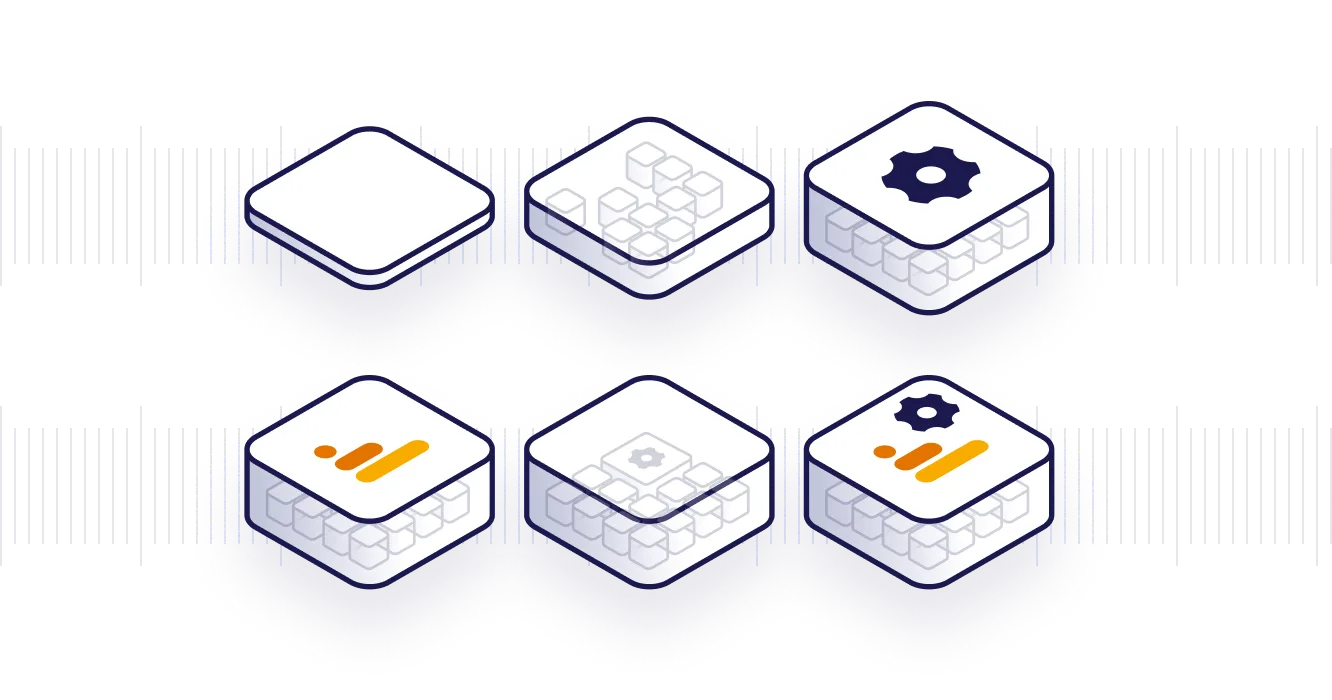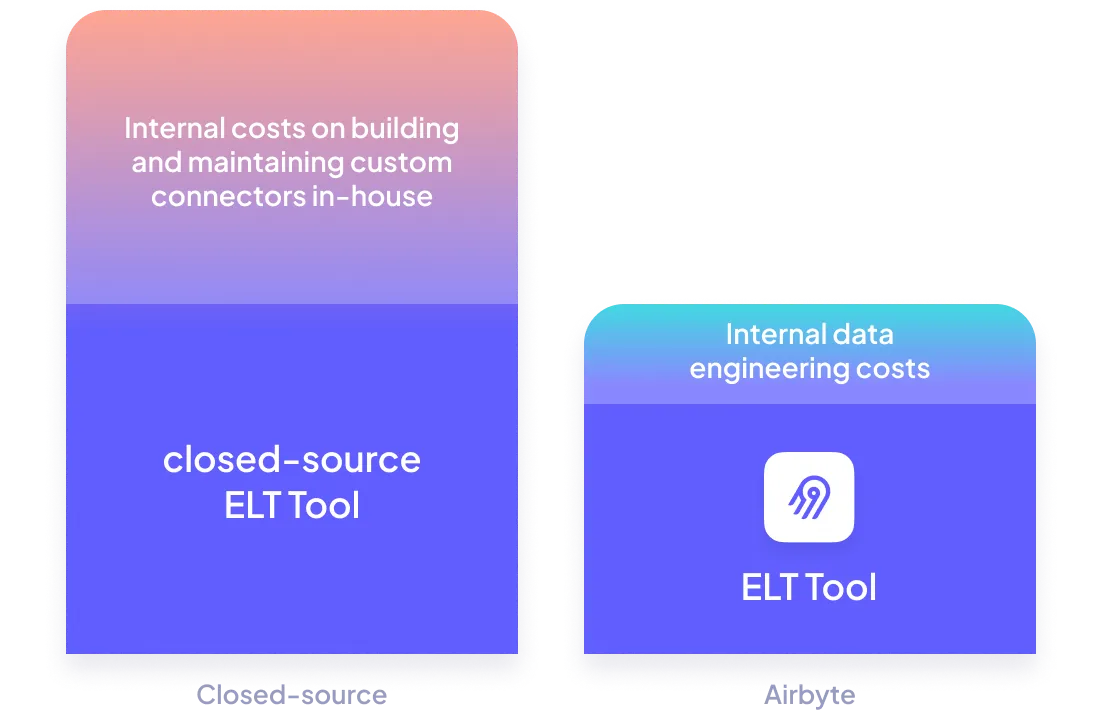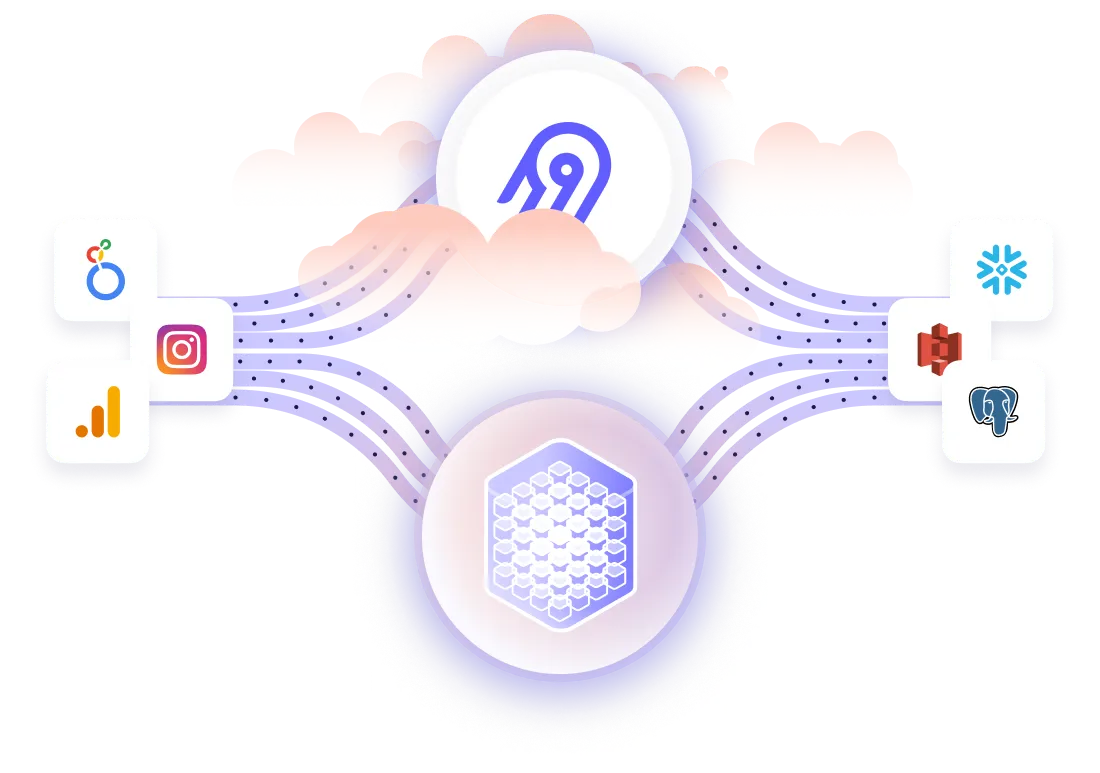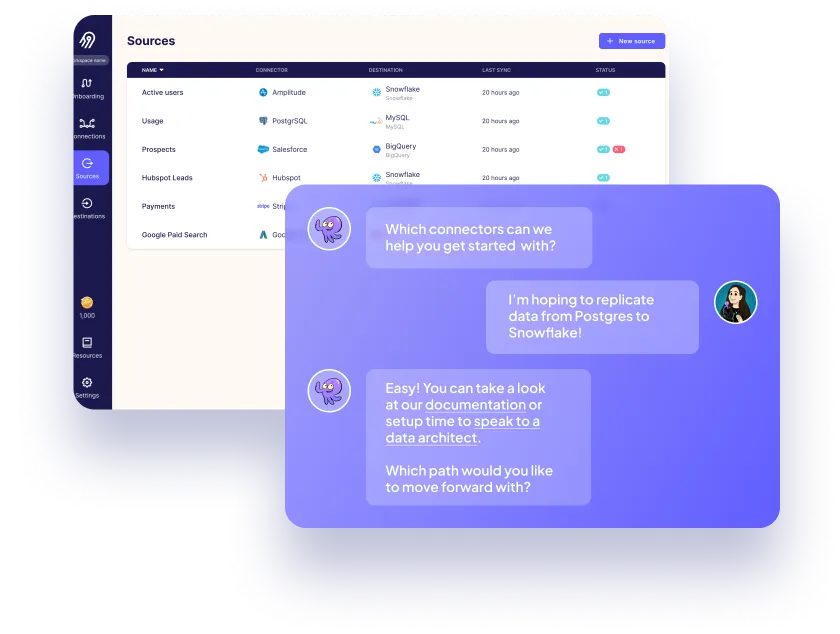
Top companies trust Airbyte to centralize their Data








Sync your Data
Ship more quickly with the only solution that fits ALL your needs.
As your tools and edge cases grow, you deserve an extensible and open ELT solution that eliminates the time you spend on building and maintaining data pipelines
Leverage the largest catalog of connectors

Cover your custom needs with our extensibility

Free your time from maintaining connectors, with automation
- Automated schema change handling, data normalization and more
- Automated data transformation orchestration with our dbt integration
- Automated workflow with our Airflow, Dagster and Prefect integration

Reliability at every level



Airbyte Open Source
Airbyte Cloud
Airbyte Enterprise

Why choose Airbyte as the backbone of your data infrastructure?
Keep your data engineering costs in check

Get Airbyte hosted where you need it to be
- Airbyte Cloud: Have it hosted by us, with all the security you need (SOC2, ISO, GDPR, HIPAA Conduit).
- Airbyte Enterprise: Have it hosted within your own infrastructure, so your data and secrets never leave it.

White-glove enterprise-level support
Including for your Airbyte Open Source instance with our premium support.


Fnatic, based out of London, is the world's leading esports organization, with a winning legacy of 16 years and counting in over 28 different titles, generating over 13m USD in prize money. Fnatic has an engaged follower base of 14m across their social media platforms and hundreds of millions of people watch their teams compete in League of Legends, CS:GO, Dota 2, Rainbow Six Siege, and many more titles every year.
Ready to get started?
FAQs
What is ETL?
ETL, an acronym for Extract, Transform, Load, is a vital data integration process. It involves extracting data from diverse sources, transforming it into a usable format, and loading it into a database, data warehouse or data lake. This process enables meaningful data analysis, enhancing business intelligence.
Google PageSpeed Insights is a tool that analyzes the performance of a website on both mobile and desktop devices. It provides a score out of 100 for the website's speed and optimization, as well as suggestions for improving the website's performance. The tool measures various factors such as page load time, time to first byte, and the number of requests made by the website. It also provides recommendations for optimizing images, reducing server response time, and minimizing render-blocking resources. The goal of PageSpeed Insights is to help website owners improve their website's speed and user experience, which can lead to higher search engine rankings and increased user engagement.
A cloud data platform, Snowflake Data Cloud provides a warehouse-as-a-service built specifically for the cloud. The Snowflake platform is designed to empower many types of data workloads, and offers secure, immediate, governed access to a comprehensive network of data. Snowflake’s innovative technology goes above the capabilities of the ordinary database, supplying users all the functionality of database storage, query processing, and cloud services in one package.
Google PageSpeed Insights API provides access to a wide range of data related to website performance. The API offers both mobile and desktop performance metrics, including:
• Page load time
• Time to first byte
• First contentful paint
• Speed index
• Time to interactive
• Total blocking time
• Cumulative layout shift
• Opportunities for improvement
• Diagnostics for common performance issues
• Suggestions for optimizing website performance
The API also provides data on the following categories:
• Resource loading times
• Image optimization
• JavaScript and CSS optimization
• Server response time
• Browser caching
• Compression
• Render-blocking resources
• Minification
Overall, the Google PageSpeed Insights API provides developers with a comprehensive set of data to help them optimize website performance and improve user experience.
What is ELT?
ELT, standing for Extract, Load, Transform, is a modern take on the traditional ETL data integration process. In ELT, data is first extracted from various sources, loaded directly into a data warehouse, and then transformed. This approach enhances data processing speed, analytical flexibility and autonomy.
Difference between ETL and ELT?
ETL and ELT are critical data integration strategies with key differences. ETL (Extract, Transform, Load) transforms data before loading, ideal for structured data. In contrast, ELT (Extract, Load, Transform) loads data before transformation, perfect for processing large, diverse data sets in modern data warehouses. ELT is becoming the new standard as it offers a lot more flexibility and autonomy to data analysts.










